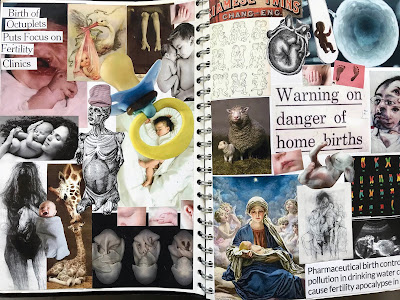LESSONS
Your base rooms will be used for Exhibition space for the next month so lessons after half term will be over in Photography. Please come over there for all timetabled lessons until further notice.
HOMEWORK FOR READING WEEK AND HALF TERM
You should have attempted one photoshoot already and got a really clear idea of what your magazine will be based on. Make sure you have informative storyboards and moodboards so staff can see very clearly what slant you are taking on your life cycle. Aside from your Photoshoot this week, we are asking you to produce the following over Reading Week:
PHOTOSHOOT NO 2:
Plan for another a photo-shoot that concentrates on a slightly different aspect of your theme. This could show objects as well as figures and use the location you have chosen in the best light.
Plan your ideas using storyboards showing extreme viewpoints - close ups, low angle, high angle, things in and out focus, shadows, lighting, action and movement.
Plan your ideas using storyboards showing extreme viewpoints - close ups, low angle, high angle, things in and out focus, shadows, lighting, action and movement.
You will need at least 10-15 strong location images, you may need to take considerably more shots to achieve 10 good ones. Try something different and consider the use of tripods, filters and wide angled, fish eye or macro lenses.
As always make sure you print out wallet images of your unedited images and then larger prints of the edited ones that you feel are the most effective.
For both location shoots you MUST annotate in your sketchbooks and answer the following for unit 30 (Location Photography) .
Ensure you write about:
Ensure you write about:
• Why you have chosen this particular location, did you have to get permission or be aware of others in the vicinity when taking these?
Who did you get to pose in the photographs and what styling took place?
How easy was it to work with lighting conditions, etc Make intelligent comments about:
· Composition
Who did you get to pose in the photographs and what styling took place?
How easy was it to work with lighting conditions, etc Make intelligent comments about:
· Composition
• Depth of field
• Contrast of background to subject
• Texture
• Colour
• Sense of movement if appropriate
• Framing and Subject placement
• Framing and Subject placement
• Lighting- spot lamp, soft, torch, natural.
For each photoshoot make sure you have :
For each photoshoot make sure you have :
- Wallet images of unedited images for both shoots
- A few photographs edited to show your best images from each shoot
- Annotations on how effective your images are with reference above in the task
- A sustained A3 gold card cut from one of your most sucessful photographs.
Find
at least 4 examples of creative magazines that use fabulous layout
and presentation of ideas. Show examples of these magazines covers and inside articles, layout spreads.
ANSWER THE FOLLOWING:
ANSWER THE FOLLOWING:
• How is colour, text and image
unified? Comment on the layout,
composition, or transition.
• Is there a
regular position/scale/ for the text on the page?
• How is the
type face integrated or contrasted with the other imagery?
• How is the
front and back cover connected or colour spreads displayed inventively?
• How many
images are used within a layout?
• What is the tone of the message? ie
fun and feel good, shocking and serious etc
• Can you explain how marks , symbols and
images have been cleverly put together to communicate this idea?
·












